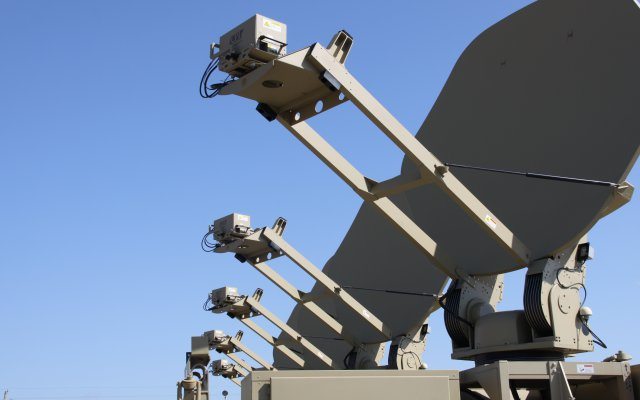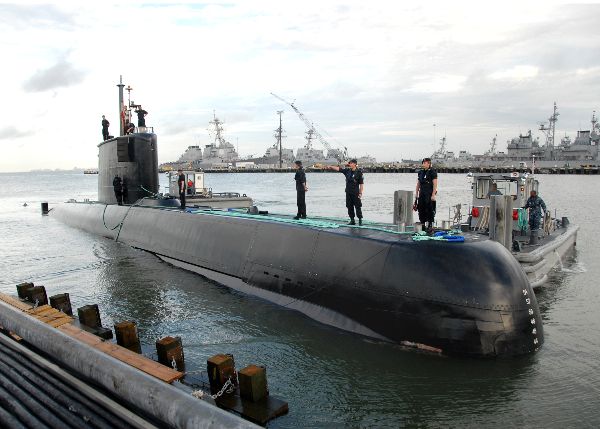The undersecretary of the Army received a detailed and succinct depiction of how the U.S. Army Space and Missile Defense Command (USASMDC)/Army Forces Strategic Command (ARSTRAT) supports America’s warfighters during a visit to Redstone Arsenal, Nov. 14.
Under Secretary of the Army Joseph W. Westphal received a command overview and first-hand look at the command’s major capabilities for today, tomorrow and the future.
“I think it is important that I came here to learn more about the capabilities Space and Missile Defense Command provides our Army, combatant commanders and the Department of Defense,” Wesphal said. “I am truly impressed with the work being done here, and with the leadership at all levels.”
“Lieutenant General (Richard) Formica has formed a team of professionals here that are expertly harnessing cutting-edge technology and leveraging space-based capabilities to support our national interests,” he added. “This critical command is providing these capabilities in support of our warfighters and is vital as the Army transforms to meet the challenges of the future.”
Shortly after arriving at SMDC’s headquarters building on Redstone Arsenal, Westphal met with leadership and learned how the command provides trained and ready space and missile defense forces.
Lt. Gen. Richard P. Formica, commanding general, USASMDC/ARSTRAT, discussed the importance of the visit and what it means to the command.
“We were very pleased to have Under Secretary of the Army Westphal visit USASMDC/ARSTRAT in Huntsville and we are proud of the many capabilities we provide to our Army and to U.S. Strategic Command across our three core tasks,” said Formica. “It was good to share a glimpse of what we do with the under secretary of the Army. He is very active in space issues (in particular) at Department of the Army Headquarters and Office of the Secretary of Defense — it was good for him to see what we do first hand.
“Secretary Westphal was very interested in the command, what we do and the capabilities we provide,” he continued. “He was happy to interact with those who had the opportunity to brief him and show him what they do. And it was good for him to interact with the interns. This was a very good visit.”
“We invited Secretary Westphal to visit us in Colorado Springs to see some of the operational issues first hand — and to both Kwaj and Fort Greely. He’s busy — and there’s a big Army for him to see — so chances of getting visits to all three places are low — but it’s worth noting his interest in the command,” Formica concluded.
After meeting with Formica, Westphal learned about Army space, high-altitude and missile defense research and development technologies.
“It is very important for him to be here because we get an opportunity to tell him about our command,” said Gisele Wilson, chief of the USASMDC Technical Center’s Space Superiority Division. “We get an opportunity to show him the wonderful work that we do here.
“It is great for the people who work here to see that he understands that our work that we’re doing is ultimately getting products out to support the warfighter,” she added.
Westphal also received a Joint Air Defense Operations Center-Development Test Lab overview and demonstration, and a Concepts Analysis Lab, or CAL, tour and briefing.
“It was very exciting and a little bit nerve-wracking to brief the under secretary (of the Army,)” said Stephanie Cleveland, a general engineer in the CAL. “But it was important that we got our message across to him. I think he got a better understanding of what we do here.
“I personally work with radar in the CAL, so I explained what the radar does and why we use it to support counter-rockets, artillery and mortars and how C-RAM in turn supports the warfighter,” she added. “I am just glad to have had the opportunity to brief him. It was an honor.”
Westphal shared impressions of his visit and the importance of the Army maintaining a highly skilled workforce.
“The Army appreciates the expertise of the Soldiers and Department of the Army civilians assigned to the Space and Missile Defense Command, and the support of all those family members who unconditionally support these men and women,” Westphal said.
“The contributions of Department of the Army Civilians are crucial, important, and a valuable part of our force,” Westphal said. “Attracting and retaining talented people, Soldiers and civilians, will remain a top priority despite the challenges ahead. It would be impossible to run the Army without the experience and depth of knowledge that our civilian workforce provides. Lastly, as dollars get tighter, we need to ensure that we don’t compromise on the very things that we’ve been saying, which is that we’re going to always support our families and our Soldiers. We’re going to stand by them.
“I’m very glad that I had the opportunity to visit Space and Missile Defense Command, and Redstone Arsenal, and see first-hand the incredible work being done here,” Westphal added. “After eleven years of combat operations, we have the most capable force this country has ever had. We have a highly educated force. We have a force that has been through quite a lot of turmoil, so this Army transformation and modernization is an opportunity for us to really harness technology and spaced-based capabilities as we reshape the Army of the future.”
After Westphal’s visit to USASMDC/ARSTRAT headquarters, he met with various leaders, Soldiers and the civilian workforce at various Redstone Arsenal organizations. His visit enabled him to gain situational awareness and better advise the Secretary of the Army to ensure critical programs are being correctly prioritized and resourced in accordance with Army transformation and modernization initiatives.











